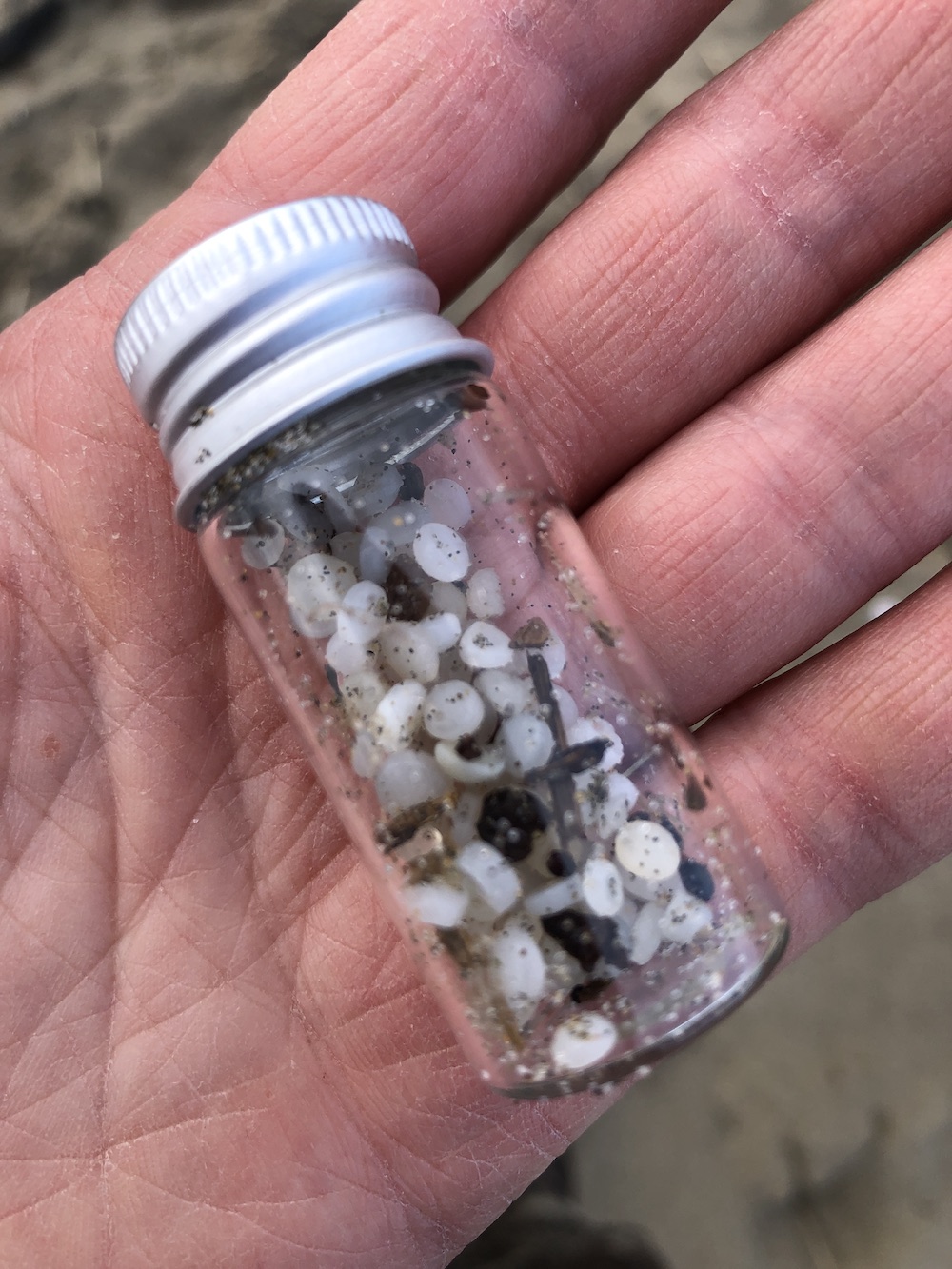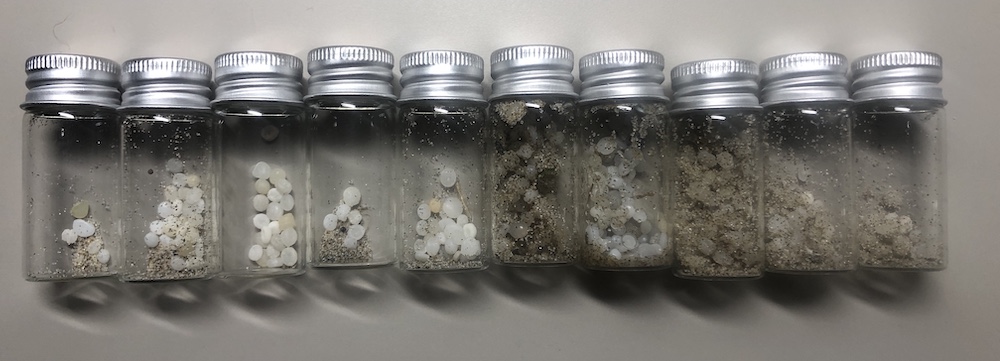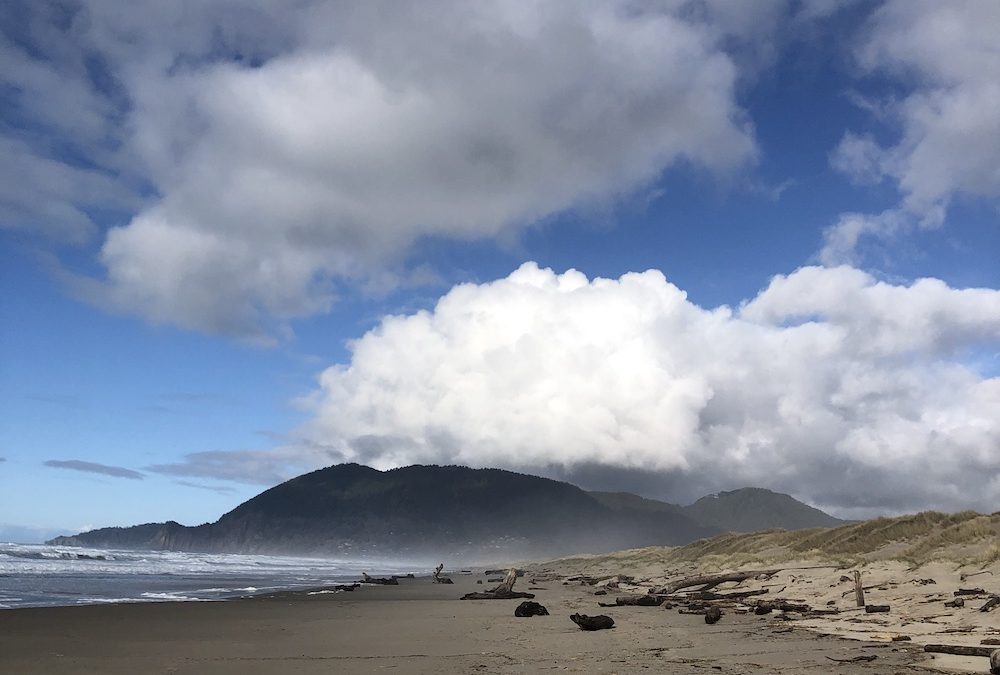The future is not in plastics.
These are Nurdles, the plastic pellets that are used to make all plastic products.  They are small and light and often escape the captivity of shipping containers and factory waste streams. They turn up in the most remarkable places, like the Oregon beach in the photo above where I collected this vial.
They are small and light and often escape the captivity of shipping containers and factory waste streams. They turn up in the most remarkable places, like the Oregon beach in the photo above where I collected this vial.
After Nurdles are extruded into their final form, they go off to live in the world. When their useful life as some product or another is over, they are discarded and become a different part of the waste stream. The plastic breaks down into smaller pieces but, being a petroleum derivative, never biodegrades. Rather, it becomes micro-plastic, and it is becoming a common beach phenomenon. The Nurdle vial in my hand in the photo to the right is the same vial among the micro-plastic below. Kneeling in the sand, I collected this vial-full in ten minutes without moving from this spot.
Ten ten-minute surveys on eight Oregon beaches
Find out more about Nurdles and the Nurdle Patrol here.



This is a simple, compelling statement that brings home the point in a manner everyone can understand. Here it is; it’s on your beach; it was so easy to find and collect, it might have been those pretty little wet stones everyone puts in their pockets. But it isn’t . . .
Indeed. The Oregon coast is often thought of as pristine. Yet, it doesn’t exist in a vacuum, and the world’s plastic readily comes to its shores. Americans still produce the bulk of the waste stream. It’s within our power to reduce that.
I showed Mom a short video on the difference between salt from the sea and ‘sea salt’ from underground or other protected areas. I was grateful that they included visuals of the minuscule plastic pieces throughout the salt. So-called table salt and most salts from the sea are loaded. I accidentally have been choosing one of the less plasticized salts for many years. I’m probably getting my supply somewhere else.
Approximately 1% of plastic entering the ocean washes up or remains floating. Some of the remaining 99% goes to the seafloor. Most is ingested by sea creatures, and works its way up the food chain.
Terrifying and awful impact we’re making. I need to continue to learn more ways I can promote reduced plastic use in my ecosystem.
Yes, please!